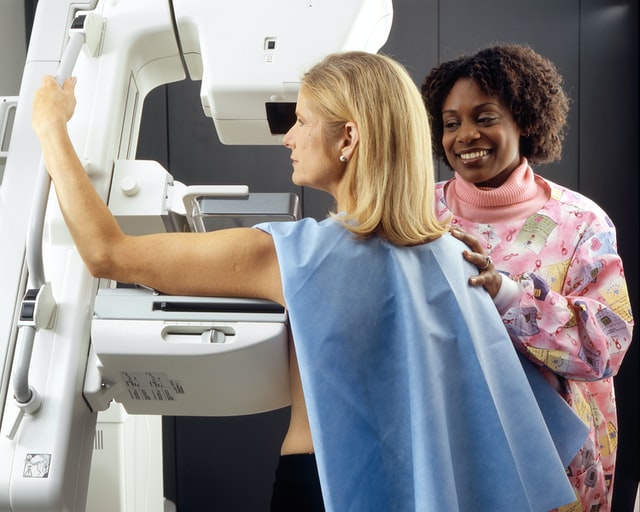According to recent research, approximately 1 in 8 women will be diagnosed with invasive breast cancer at some time in their lives. Keep reading to learn more about risk factors associated with breast cancer, as well as how to identify and treat this disease.
Risk Factors
Medical experts attribute the development of breast cancer to a combination of both unknown and known risk factors. Some risk factors are unavoidable, while others can be prevented through lifestyle changes. The most common risk factors for breast cancer include:
- Being a woman over the age of 50
- Having a family or personal history of breast or ovarian cancer, or certain non-cancerous breast diseases
- Starting menstruation under the age of 12
- Being overweight or inactive
- Smoking or drinking excess alcohol
Detecting Breast Cancer
To detect breast cancer, physicians may use the following tests:
- Mammogram—This is a breast X-ray. Women over age 50 should get a mammogram annually.
- Biopsy—This entails the removal of cells or tissues so they can be viewed under a microscope.
- Estrogen and progesterone receptor tests—These tests are used to determine hormone levels.
- Magnetic resonance imaging (MRI)—An MRI procedure uses a magnet, radio waves, and a computer to make a series of detailed pictures of inside the body.
Treatment Options
The chance of recovery and the treatment options for breast cancer depend on many factors—including the stage of cancer, how fast the tumor is growing, hormone receptor levels, and the woman’s age. Four common forms of treatment used for breast cancer are:
- Surgery (ranging from a small lump of tissue being removed to an entire breast)
- Radiation therapy
- Chemotherapy
- Hormone therapy
Know the Signs
It’s critical to assess your body regularly for potential signs of breast cancer. Common symptoms include a lump in the breast or underarm area, nipple pain or abnormalities, redness or scaly skin near the breast, and discharge coming from the nipple. If you detect any of these signs, consult your doctor immediately.
Early Detection Plan
The American Cancer Society has noted that when breast cancer is detected early, and is in the localized stage, the 5-year relative survival rate is 100%. You can’t get better news than that. This is why it is essential to take the steps needed to detect breast cancer.
Starting at the age of 20, having yearly clinical breast exams is important. Every year starting at age 40, all women should have a yearly mammogram. Self-exams at home can be done at any time and immediately consult your doctor if you have any concerns. The National Breast Cancer Foundation has a great website called Early Detection Plan where you can get lots of helpful information and create your own plan.
If you are thinking about getting Life Insurance, don’t put it off. The sooner you are covered, the better for you and your loved ones. Don’t put off creating a breast cancer detection plan either. No one likes to think about cancer or death, but having a plan is essential.




